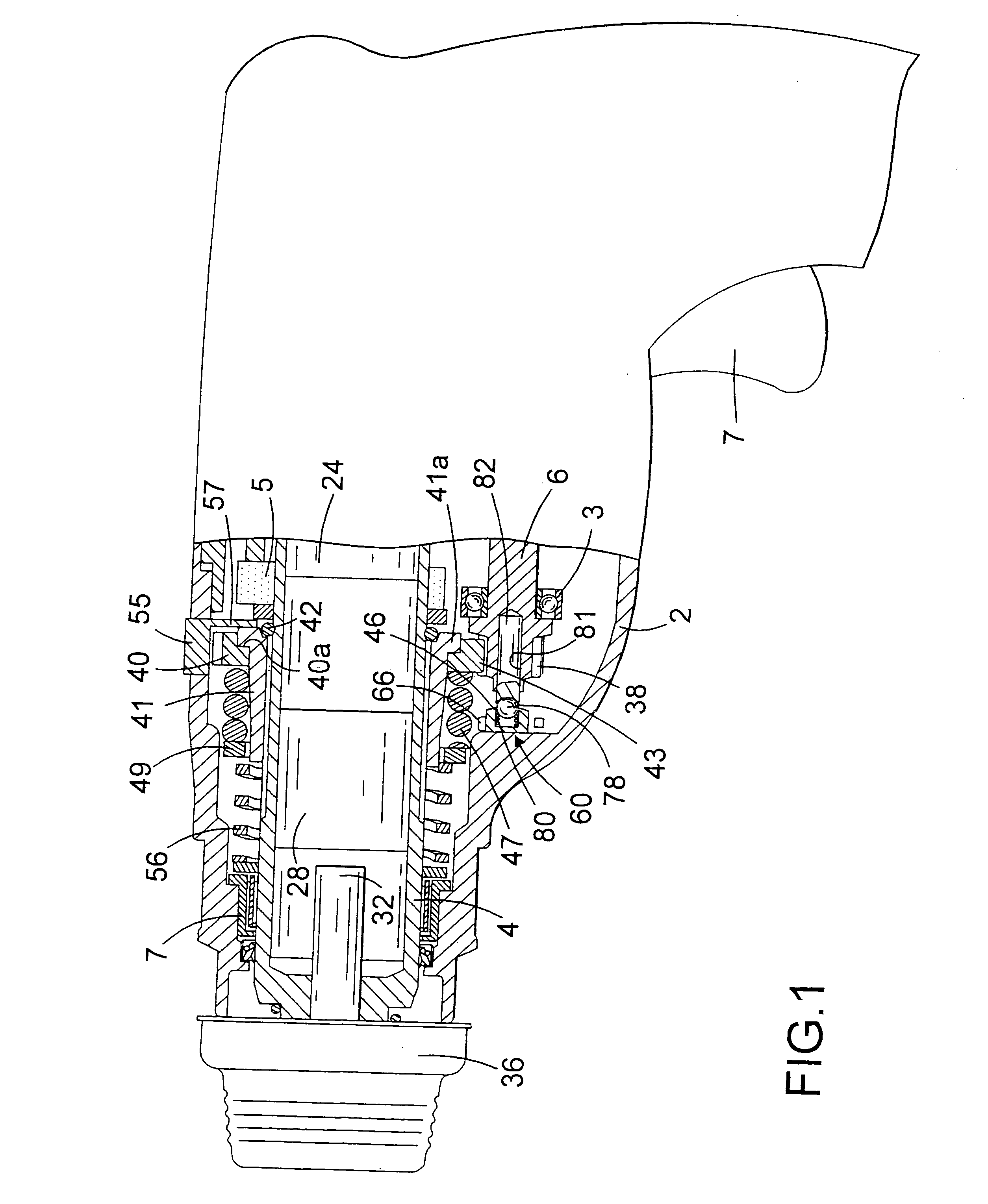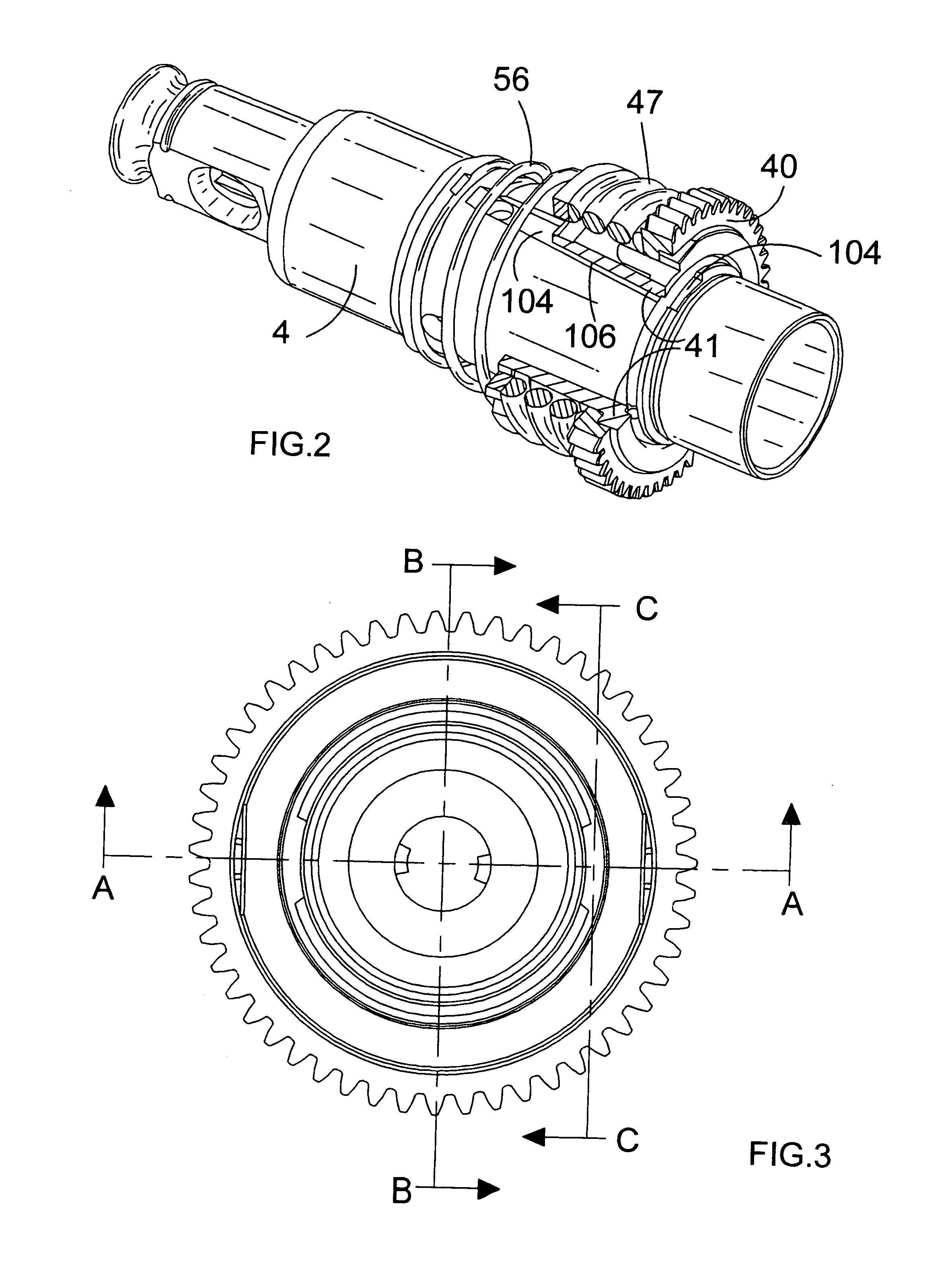Clutch for rotary power tool and rotary power tool incorporating such clutch
a technology of rotary power tools and clutches, which is applied in the direction of clutches, slip couplings, and percussive tools. it can solve the problems of overload clutches slipping, hammer housings prone to rotate against the grip of users, and increase torque transmitted via the rotary drive train, so as to reduce the tendency of the first clutch member
- Summary
- Abstract
- Description
- Claims
- Application Information
AI Technical Summary
Benefits of technology
Problems solved by technology
Method used
Image
Examples
Embodiment Construction
[0060]Referring to FIG. 1, a rotary hammer has a forward portion shown in cross-section, and a rear portion incorporating a motor and pistol grip rear handle in a conventional manner. Alternatively, the handle may be of the D handle type. The handle portion incorporates a trigger switch 7 for actuating an electric motor which carries a pinion (not shown) at the forward end of its armature shaft. The pinion of the motor rotatingly drives an intermediate shaft 6 via a gear which is press fit onto the rearward end of the intermediate shaft 6. The intermediate shaft 6 is rotatably mounted in a housing 2 of the hammer via a first bearing (not shown) located at the rearward end of the intermediate shaft 6 and a forward bearing 3 located at the forward end of the intermediate shaft 6.
[0061]A wobble drive hammering mechanism, of a type which will be familiar to persons skilled in the art, is provided for reciprocatingly driving a piston 24. The piston 24 is slidably located within a hollow ...
PUM
 Login to View More
Login to View More Abstract
Description
Claims
Application Information
 Login to View More
Login to View More - R&D
- Intellectual Property
- Life Sciences
- Materials
- Tech Scout
- Unparalleled Data Quality
- Higher Quality Content
- 60% Fewer Hallucinations
Browse by: Latest US Patents, China's latest patents, Technical Efficacy Thesaurus, Application Domain, Technology Topic, Popular Technical Reports.
© 2025 PatSnap. All rights reserved.Legal|Privacy policy|Modern Slavery Act Transparency Statement|Sitemap|About US| Contact US: help@patsnap.com



